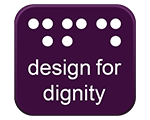Guidance on contact centres
Top tips for businesses using call centres*Adapted from http://consumers.ofcom.org.uk/ofcom-for-business-consumers/help-for-disabled-business-customers/disabled-customers-and-call-centres/
Viewed September 2016
- All call centre staff should be given disability awareness training.
- Offer customers the choice of contacting your business by post or email as well as phone.
- When customers have to confirm complex details over the phone, offer them the chance to have information posted or emailed for confirmation.
- Call centre speech levels (at headset and system output) should meet international standards and should be checked on a regular basis.
- If you advertise a TTY*TTY is an older technology that allows people to type messages that the relay operator (or your business if you have one of these machines) can read. number, make sure that your staff know how to answer and use the TTY machine.
- Music or a waiting signal helps people to know they have not been cut off.
- Keep call routing menus short (4 is a good maximum) and give an option of speaking to an operator in the initial menu.
- Allow the caller the option of repeating the menu.
- The system should transfer the caller to an operator if no option is chosen or if the caller cannot do what is being asked, e.g. enter an account number.
- Menu options should be logical for the customer rather than based on your organisational structure.
In 2012, the Contact Centres & Telemarketing Council in the UK published a guide for businesses with call centre operations.*White paper Guidelines for call centres dealing with vulnerable consumers, 2012, Contact Centres & Telemarketing Council viewed at http://dma.org.uk/uploads/call-centres-vulnerable-consumers_final_53d7c237289c1.pdf
Viewed September 2016 The particular focus was on how to identify customers that were vulnerable.
“Organisations have little understanding of how to pick up signs of a vulnerable consumer, or how best to handle such situations with care and respect. Staff may not be equipped to deal with the situation, and there is often no policy for addressing any problems that may arise. This means that despite their best intentions, organisations may not give consistent quality service.”
The guide is very practical and covers how to identify vulnerable consumers, practical tips when talking to vulnerable consumers and steps to take before making a sale to someone suspected of being a vulnerable customer. Importantly, the guide makes recommendations about the things that businesses should do to ensure the equitable and dignified treatment of customers including:
- Steps for senior management and project engagement including outsourced call centre partners.
- Procedural steps that can be taken such as allowing extra time in call time KPIs for these calls, marketing planning and marketing materials, returns/cancellation processes and complaints processes.
- Staff training actions.
- Capturing customers' needs in a database for consistent treatment over time and across channels.
- Post call quality assessment procedures.



